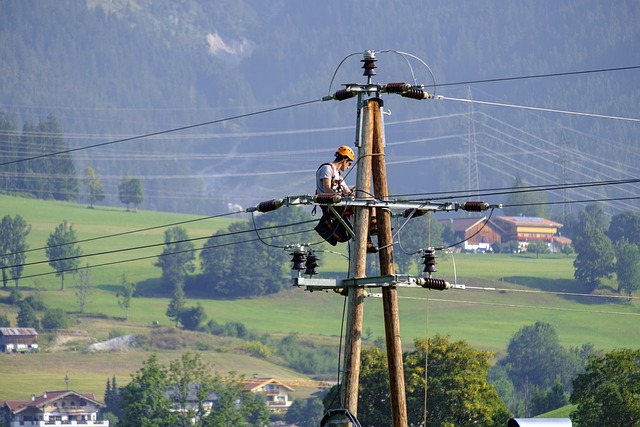How to Switch Energy Suppliers for Better Prices and Service
How to Switch Energy Suppliers for Better Prices and Service
How to Switch Energy Suppliers for Better Prices and Service
Switching energy suppliers can provide significant savings in energy costs and improve the quality of services provided. As competition in the energy market intensifies, customers now have more choices. Reviewing your current energy provider’s rates and services is critical to determining whether switching to a new provider would be beneficial.
While switching energy providers may seem daunting, it’s relatively simple. This blog will provide guidance on how to switch energy suppliers and the benefits of doing so.

Image by Bruno/Germany from Pixabay
1. Compare energy rates
When comparing energy rates and plans, it’s important to consider a variety of factors to determine which provider is best for your needs. You can use Electricity Monster to compare electricity and natural gas plans from different providers in your area.
Some of the most important factors to consider include the provider’s fixed or variable rates, the length of the contract, and any discounts or promotions that may be offered. The terms and conditions of each plan must be carefully reviewed to ensure you are getting the best deal for your energy needs.
By comparing energy rates and plans, you can decide which provider is right for you.
2. Research energy suppliers in your area
Find out which providers are available in your area. This information can usually be found on the website of your local energy regulator. Once you have a list of potential suppliers, check their websites to learn more about their services, energy plans, and rates.
You can also compare energy plans and rates side by side using online comparison tools. Some factors to consider when researching a provider include the type of energy they offer, whether they offer renewable energy options, and their customer service ratings.
Also, check to see if they are offering any special promotions or discounts, and if so, be sure to read the fine print for terms and conditions.
3. Evaluate customer reviews and ratings
Customer reviews and ratings can provide valuable insights into a supplier’s customer service, reliability, and overall satisfaction. One way to access customer reviews and ratings is to check the provider’s website, which may have a section for testimonials or reviews.
For an unbiased opinion, you can also check out third-party review sites such as Trustpilot or Consumer Affairs. Pay attention to both positive and negative reviews to get a full picture of a provider’s strengths and weaknesses.
Look for common themes, such as complaints about billing or customer service, and consider whether these issues affect your experience with the provider.
4. Check for hidden fees
Some providers may offer lower rates but charge extra for services such as late payments, paper bills or early termination of contracts. These costs can quickly add up and offset potential savings from switching suppliers. To avoid unexpected charges:
- Please read the provider’s terms and conditions carefully before enrolling in a program.
- Learn about the payment and billing process and ask any questions about potential charges.
- If you’re unsure about a provider’s fees, please contact their customer service team for clarification.
5. Arrange the switch
This usually involves contacting a new provider and giving them your account information and meter number. Your new provider will then contact your old provider to initiate the transition.
Depending on your location and the providers involved, this process can take anywhere from a few days to a few weeks. During this transition period, it is critical to monitor your energy usage and keep track of any bills or statements you receive from both suppliers.
You should also pay attention to the effective date of the new program. It is critical to ensure that you receive all payments during the transition, as this may result in late fees or other penalties. After the transition is complete, you will receive an energy bill from your new supplier.
6. Confirm that the switching is successful
The easiest way to do this is to monitor your energy usage and bills to make sure they reflect your new plan and provider. You should also confirm that your new supplier has received your account information and meter number from your old supplier and that your old supplier has stopped billing you for energy usage.
If you signed up for automatic or paperless billing, please update your payment and billing information with your new provider.
Also, check with your old provider to make sure you’ve paid any outstanding bills or fees and that you have no outstanding balances. If you experience any issues during the transition process or notice discrepancies with your bill, please contact your new provider’s customer service team immediately.

Image by Michal Jarmoluk from Pixabay
Switching energy suppliers is an easy and effective way to reduce energy bills and improve service quality. Following these six steps, you can research providers, compare rates and plans, evaluate customer reviews, check for hidden fees, schedule a switch, and confirm its success.
With the right information and careful planning, you can switch suppliers with confidence and enjoy the benefits of reduced energy costs and improved service.
Keep it Artkraft
Find more articles in our categories DIY Home & DIY Projects et encore Tips & Crafts .
Thanks for visiting we hope our article How to Switch Energy Suppliers for Better Prices and Service
, help us and share the article on Facebook, instagram and whatsapp with the hashtag ☑️ #Switch #Energy #Suppliers #Prices #Service ☑️!


Comments are closed, but trackbacks and pingbacks are open.